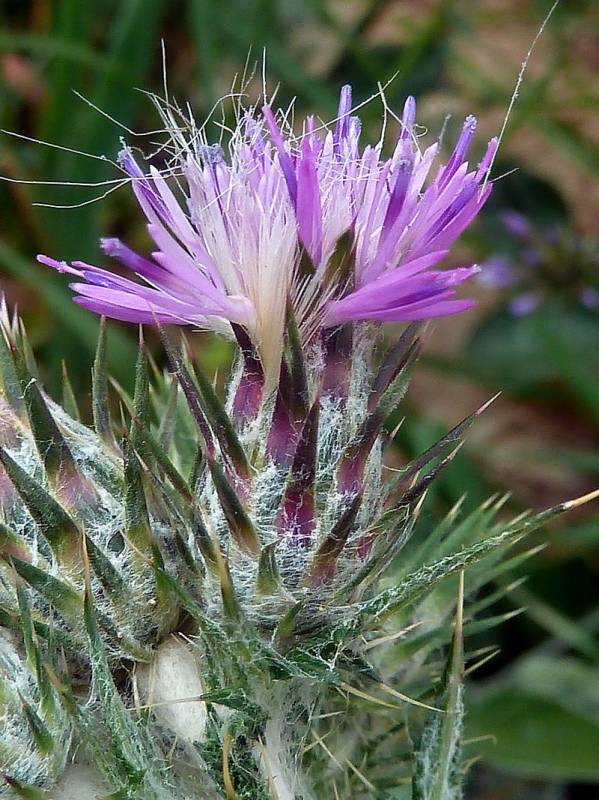Carduus pycnocephalus
Italian plumeless thistle
Basal leaves tapering to winged petioles, blades 10–25 cm, margins pinnately 2 to 5 lobed, abaxial faces ± tomentose, adaxial faces tomentose and pilose, often glabrate;
cauline leaves sessile, shorter, margins less divided than basal, distally reduced to bracts.
Heads borne singly or clustered in tight groups of 2-5, heads at ends of branches and sometimes in upper axils, sessile or short-pedunculate, 20–25 mm;
peduncles winged throughout or unwinged, 0–2 cm long, tomentose;
involucres cylindric to ellipsoid, 17–22 mm diameter;
phyllaries linear to lanceolate, with appressed loosely tomentose bases, 2–3 mm wide and ascending, linear appendages 0.5–1.5 mm wide, not scarious, distally scabrous on midribs and margins, spine tips 1–3 mm, inner straight and erect, with unarmed or minutely armed tips;
Corollas purple, dark purple, or pink, 14–16 mm long tube;
lobes 3 times longer than throat.
Cypselae ellipsoid, golden to brown, 4–6 mm, finely 20-nerved;
pappus bristles 15–20 mm.


